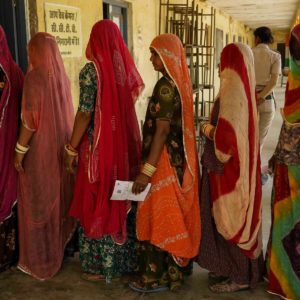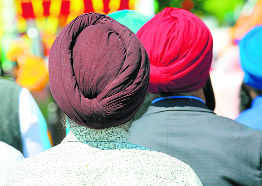Chandigarh, September 14
The Indian cricket board (BCCI) was the last of the big international boards to introduce central contracts for women cricketers. It happened in 2015, much after the likes of Pakistan or Australia did it. Why were the BCCI officials not keen to make sure India’s women cricketers were financially stable in their pursuit of cricket as a career? After all, aren’t they supposed to promote cricket in India? There is no clause in BCCI’s memorandum of understanding that stipulates it would promote only men’s cricket.
Lack of money was certainly not the reason —BCCI has been the richest cricket association in the world for a long time, right from the 1990s. The real reason was the lack of vision or interest in women’s cricket, even as BCCI’s coffers began to overflow. This money was, of course, made due to the popularity of the men’s game; however, there is no reason to not subsidise the women’s game using just a fraction of BCCI’s revenues. After all, women cricketers represent India too and their performance also brings joy to the fans.
Big money
BCCI’s money chest is going to burst soon. IPL’s media rights will earn BCCI Rs 3,269.5 crore each year for the next five years; IPL’s title sponsorship is going to earn BCCI another Rs 439.8 crore every year. The national team’s home match TV rights are worth another Rs 770 crore each year from 2012 to 2018. This figure will also rise significantly when the rights come up for sale again. BCCI, thus, is going to earn at least Rs 4,400 crore each year, give or take a few crores.
A significant portion of the IPL TV rights goes back to the IPL teams. But BCCI is still left with at least Rs 2,500 crore every year. Then there is also the small matter of $405 million (roughly Rs 2,600 crore) which BCCI will get from the International Cricket Council for the period 2016-23.
Women’s game
BCCI introduced contracts for the women cricketers in 2015, in two grades — Rs 15 lakh annually to each Grade A player and Rs 10 lakh annually to each Grade B player. This is decent money, especially as most women cricketers remain employed, many of them with Indian Railways. But a contract of Rs 15 lakh per annum seems quite paltry when you look at BCCI’s revenues.
We have an example of a better revenue distribution in Australia. Australia’s women cricketers are the best-paid women athletes in that country. After Cricket Australia and the players’ union came to an agreement on revenue-sharing, the earnings of the women cricketers have risen significantly. The minimum a Cricket Australia-contracted woman player would earn in 2017-18 is A$72,076 (roughly Rs 37 lakh) from the central contract. Match fees and bonuses are above this. All contracted domestic players would have deals worth A$25,659 (Rs 13.15 lakh) for playing for their provincial teams, plus at least A$10,292 (Rs 5.2 lakh) for playing in the domestic Twenty20 competition.
Cricket Australia has set lofty goals for women’s cricket: “Achieve gender equity across Australian cricket. Develop and accelerate the opportunities for women in all areas and levels of our game. Sustainably grow women and girls’ participation, and make sure they find cricket clubs welcoming and enjoyable places to be.”
What BCCI must do
The dispute between Australia’s cricketers and cricket board was over revenue-sharing. BCCI’s revenue is so huge that revenue-sharing for the women players would be out of question. But there are other, more practical actions BCCI must take. It must increase the pool of nationally contracted players from 12 it had in 2015-16 — even Pakistan, where women’s sport is less encouraged, had over 20 centrally-contracted players.
BCCI must increase the pool of talent by pushing aggressively to make cricket-playing popular for girls. It must become an attractive career option even at the domestic level. Infrastructure for girls must be created, as also coaching programmes. Schools and colleges must be involved, and more tournaments created. State associations must set up training academies for girls, as has been done by the Himachal Pradesh Cricket Association.
Charity begins at home. BCCI must learn to treat women cricketers as part of the family.
Breaking News
 Girls again, clinch top three spots in Class X PSEB exams
Girls again, clinch top three spots in Class X PSEB exams India begins voting in gigantic election as Modi seeks historic third term
India begins voting in gigantic election as Modi seeks historic third term Dubai continues to reel from storm damages
Dubai continues to reel from storm damages ‘Story Belongs In Netflix Series’: Indo-Can Men Arrested In Canada’s Biggest Ever Gold-Cash Heist
‘Story Belongs In Netflix Series’: Indo-Can Men Arrested In Canada’s Biggest Ever Gold-Cash Heist German police target China-linked human smuggling gang with raids on homes and businesses
German police target China-linked human smuggling gang with raids on homes and businesses Two arrested for firing at Salman Khan’s house
Two arrested for firing at Salman Khan’s house Ram Navami celebrations begin in Ayodhya; ‘Surya Tilak’ of Ram Lalla
Ram Navami celebrations begin in Ayodhya; ‘Surya Tilak’ of Ram Lalla Road mishap claims Amritsar youth’s life in Canada
Road mishap claims Amritsar youth’s life in Canada Canadian dollar extends losses as Canada’s inflation rises
Canadian dollar extends losses as Canada’s inflation rises North Korea is buying Chinese surveillance cameras in a push to tighten control, report says
North Korea is buying Chinese surveillance cameras in a push to tighten control, report says Hafiz Saeed’s aide who killed Indian prisoner Sarabjit Singh shot in Pakistan
Hafiz Saeed’s aide who killed Indian prisoner Sarabjit Singh shot in Pakistan Chirag Antil, 24-year-old Indian student, shot dead in car
Chirag Antil, 24-year-old Indian student, shot dead in car






























